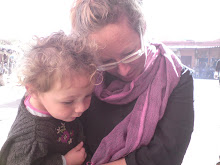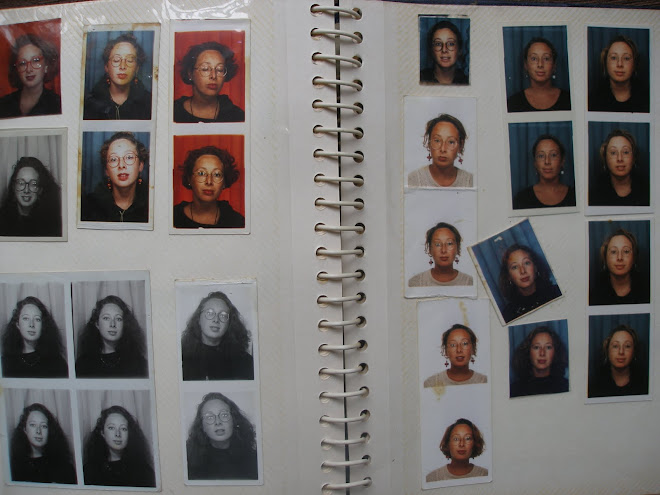I catch the inscription on one of the many headstones; Hannah wife of William Hubbard...
My attention is distracted as someone just cleared their throat, but I can't see them. And now people have walked into the graveyard... 2 women. I watch them casually. One in the lead, has a leaflet in her left hand (and as she walks it waves backwards and forwards) and a black rucksack over her right shoulder. The second women who follows behind pulls up her mac and tightens it around her waist. We catch each others eye, smile and say hello. All seem perfectly comfortable and they disappear round the corner of the church behind me (St Margaret's Church). A faint sound of a child calling, an aeroplane passes overhead and more cars pass in the distance. I wonder if they are wondering what I am up to and I suspect not really.
I can barely see the inscription on the gravestone and I have to get up and move closer, crouching down I can see more...Hannah wife of William Hubbard, Died December 27th 1846 aged 54 years old. She died 166 years ago, and so she has been lying in that spot for all that time next to her husband who died May 15th 1872 aged 80 years. He went on to outlive his wife by 26 years. So, he was the same age as her when she died. I wonder whether he went on to remarry or if William and Hannah had children and if so why their graves aren't here beside their mother and father.
The wet grass has soaked into my jeans and so I return back to my original spot on a slab of the path. Someone somewhere is knocking nails into wood. Trees are turning orange and yellow. A berry tree on my right is laden with heavy red fruits. They can't be cherries it's too late for cherries but they look a lot like them. Does this mean it will be a cold winter? Ducks are quacking over by the pond under the tall trees shaking in the breeze.
My bottom is cold. My mocha coffee, which I paid a whole £3.05 for, is the most expensive mocha in the world. It's beside me on the path next to my red purse and my phone to check for 15 minutes time up. A cloudless sky in front and the wind blows my red and white spotty scarf beneath my chin. Peaceful. Rustling leaves, grass cuttings dancing in circles by my crossed legs. I feel content, present and still. Ditchling museum sits behind the dark evergreen tree which I don't know the name of because I don't know much about trees. I went into the museum earlier and paid a £1 because I am a student – this made the mocha bearable. A voice somewhere near...a male voice. I had fantasised about finding a perfect painting for my Looking at Art Task in the museum and imagined myself sitting alone in a wooden framed room in a moment of perfection lasting 15 minutes. But I wasn't allowed to take my drink in, the ladies on the desk said they couldn't allow it...my first disappointment... and, I watched my dream fade still further when I quickly discovered there were no paintings that caught my eye in the gallery.
Whistling wind, cracking wood, and the bells of the clock strike 'bong, bong' two o'clock exactly. Having abandoned my Art Task I decided to do my Observation Task instead. But there are no people here?...I check the blurb which says...'anywhere you like'. And, now I am wondering how this piece of writing demonstrates my understanding of case study reporting principles and whether this piece could ever be described as 'a report'.
The wind blowing across my wide open ears sounds like the sides of a flapping tent, a dog barking seems to come from all around and a magpie hops along past a tree infront, turns back and then pops up onto the edge of a gravestone. My throat hurts when I swallow. I pick up a feather on the path next to me to take home for Winifred because she loves them. And as I walk back to the van I glance over to the pond and see the two women from earlier sitting side by side on a bench by the ducks.
On returning home I googled William Hubbard and found The Sussex 1861 Census which lists William Hubbard, 69, Retired Innkeeper, Lydia Hubbard, Wife, 46, and Harry Hubbard, Son, 43, Gardener.
I can infer from this then that William having lost his wife Hannah went on to marry Lydia within fifteen years of her death. He at 69 years is married to a 46 year old. The son Harry's age suggests he must have been from Williams first marriage as he is only 3 years younger than his stepmother Lydia. How interesting. Why is it then that William is buried with Hannah. Perhaps if I go back to the graveyard I will find Lydia's grave. She was probably only about 57 years old at the time of Williams death in 1872, so perhaps she went on to marry someone else.
A William Hubbard, Inn Keeper at the Bull is also listed in the 'Pigot & Co Directory 1840 for Sussex ~ Ditchelling & neighbourhood' where it is written, 'the burial ground attached to it [the church] is remarkably neat, and invariably attracts the observation and admiration of the stranger'. Which I think is really quite fitting.
I went back to the graveyard on Monday (11th September). I couldn't find Lydia's gravestone. However, there were two other graves very near to William and Hannah. One normal size and one smaller. I could not decipher the inscriptions on either of them. I could contact St. Margaret's Church to find out if Lydia and Harry are buried here. There is even a possibility that I could develop a piece of art work from this little project. (I have since emailed Ditchling Museum to see if they can tell me if Lydia and Henry are buried in the graveyard, see Appendix 1).
I have also found some information about Eric Gill, the sculptor and letter cutter, who came to Ditchling in 1907. I already knew about Eric Gill's links to this village. And while I have liked his work, more recently I read about his possible incestuous history and this made me wonder if I could continue to appreciate his work with this knowledge? I haven't resolved this issue.
And finally, I have just found out that Ditchling has had a few notable residents including, Raymond Briggs, Herbie Flowers, Dame Vera Lynn, Sir Donald Sinden and Jamie Theakeston.
























.jpg)









No comments:
Post a Comment